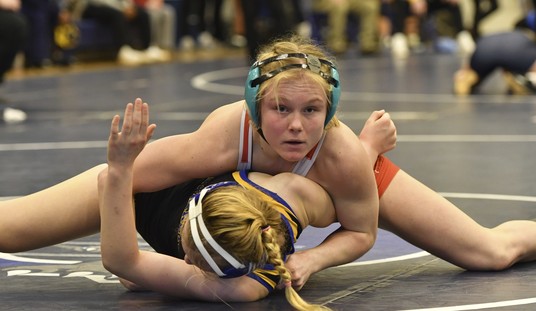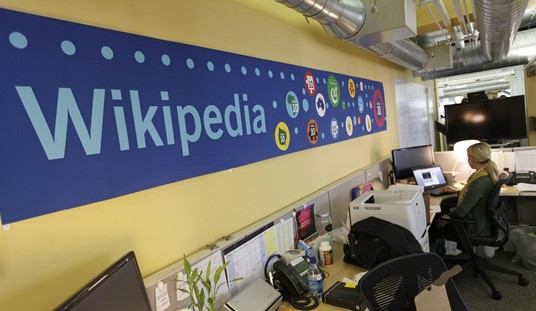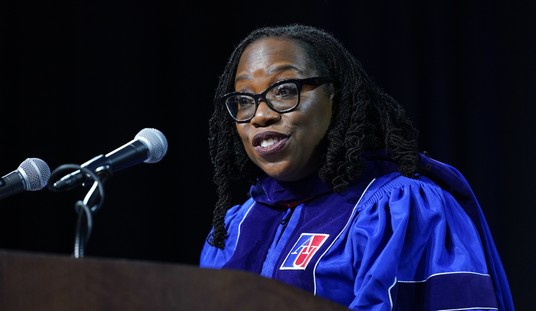On one hand, any job growth in November might be seen as good news. Given the huge and still-increasing spike in COVID-19 infections and increased commerce restrictions from governors and mayors, it’s a wonder we haven’t yet tipped back toward the negative. In a normal month, adding 245,000 jobs would actually be decent-to-good news, too.
These aren’t normal times, however. The US economy is still down around nine million jobs and the economy depends on maintaining the momentum to restoring those lost positions:
Total nonfarm payroll employment rose by 245,000 in November, and the unemployment rate edged down to 6.7 percent, the U.S. Bureau of Labor Statistics reported today. These improvements in the labor market reflect the continued resumption of economic activity that had been curtailed due to the coronavirus (COVID-19) pandemic and efforts to contain it. However, the pace of improvement in the labor market has moderated in recent months. In November, notable job gains occurred in transportation and warehousing, professional and business services, and health care. Employment declined in government and retail trade. …
In November, the unemployment rate edged down to 6.7 percent. The rate is down by 8.0 percentage points from its recent high in April but is 3.2 percentage points higher than it was in February. The number of unemployed persons, at 10.7 million, continued to trend down in November but is 4.9 million higher than in February. …
The labor force participation rate edged down to 61.5 percent in November; this is 1.9 percentage points below its February level. The employment-population ratio, at 57.3 percent, changed little over the month but is 3.8 percentage points lower than in February.
This graph from the BLS shows what this year looks like in terms of overall jobs. We’ve had a 16-million-job bounceback, but this is still not a good level for a plateau:

That is a graph showing jobs recovery running out of gas. In this kind of situation, 245,000 is barely a maintenance level; at least half of that only covers population growth. Economists had expected a level nearly twice as large, and even that would have been a relative worry in regard to momentum:
Nonfarm payrolls increased by just 245,000 in November, well below Wall Street estimates as rising coronavirus cases coincided with a considerable slowdown in hiring.
Economists surveyed by Dow Jones had been looking for 440,000 and the jobless rate to decrease to 6.7% from 6.9% in October. The unemployment rate met expectations, though it fell along with a drop in the labor force participation rate to 61.5%. A more encompassing measure of joblessness edged lower to 12%. …
“Overall, it is a disappointing report,” economists at Jefferies said in a note. “With COVID cases surging again and policies being put in place to try and slow the spread, hiring has slowed down. Also, worker availability is a significant limiting factor as well, with many unable to go to work due to COVID concerns or family care obligations.”
The panel’s concern about the labor force was justified. The drop in the unemployment rate did come in large part from a drop of 400,000 from the civilian labor force in the Household survey. The status of “not in labor force” grew by 560,000, swamping the jobs added numbers in the Establishment survey and the exit of 326,000 from unemployed status in Household. Most of the gains in November appears to have been from people returning from furloughs.
Also, the areas where jobs got lost point to tougher days ahead. More than half of the gains came in transportation and warehousing. Retail, on the other hand, lost almost 35,000 jobs, which means that either consumers can’t access retail commerce or don’t want to access it. Combine that with the declining numbers on personal income and disposable income, and it’s looking as though we are slipping into a double-dip recession — possibly this month.
In this situation, Congress might be forced to finally act on Phase 4 relief. The need for distribution support for the vaccines alone require action on Capitol Hill, but the economy’s red lights are adding to that pressure. Politico reports “the most movement we’ve seen in months” on a new package, but it’s still not clear what will be in the new bill — assuming they produce one:
The latest sign of progress: Majority Leader Mitch McConnell and Speaker Nancy Pelosi talked by phone for the first time since the election about a potential stimulus deal. “Yeah, well we had a good conversation. I think we’re both interested in getting an outcome, both on the omnibus and on a coronavirus package,” McConnell said.
So what broke the logjam? Leaders were under mounting pressure to cut a deal, with the pandemic raging and a slew of aid programs set to expire before the end of the year. But centrist lawmakers in the Senate and House also played a key role in jump-starting the talks, bucking their leadership to introduce their own bipartisan plan this week.
This is the most movement we’ve seen in months, and it’s clear everyone wants a deal before Christmas. But the proposal released by moderates this week has yet to be put into actual legislative text, and there are still some more compromises that need to be made. So the devil’s in the details, as they say.
The new package had better have some relief for both payrolls and consumers. We got about six months of momentum out of the CARES Act while the economy was crashing in April. If they can pass something quickly along the same parameters, we might get better momentum by pre-empting the crash first. With vaccines on the way, we may only need a few months of breathing room before we can get back to normal commerce. Today’s jobs report shows that the time to act before a crash is rapidly running out.








